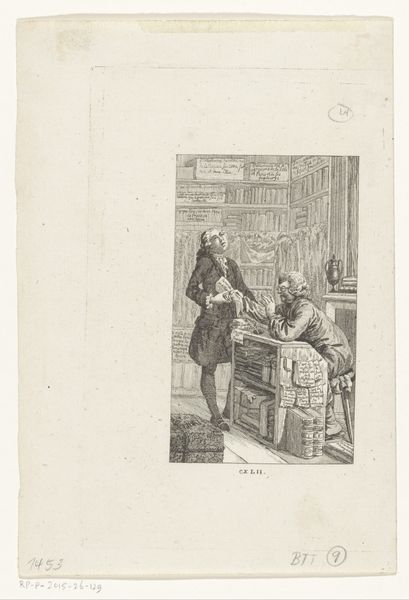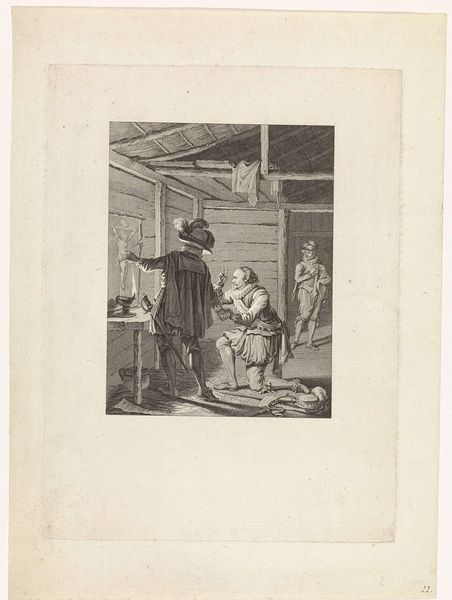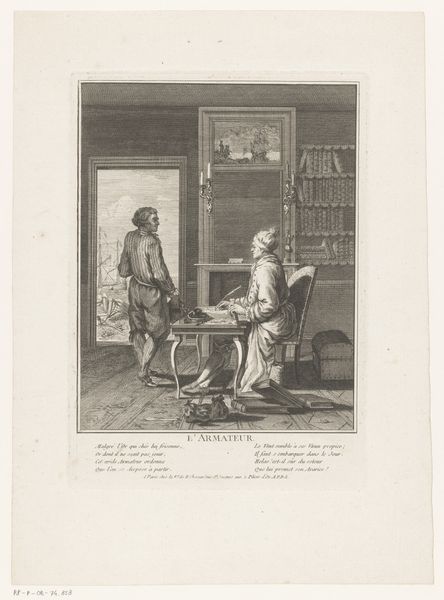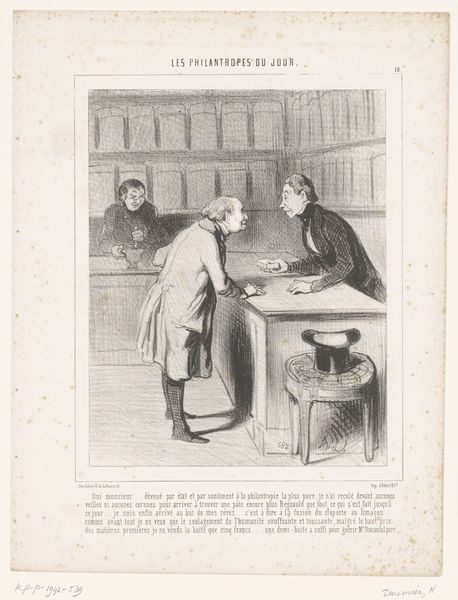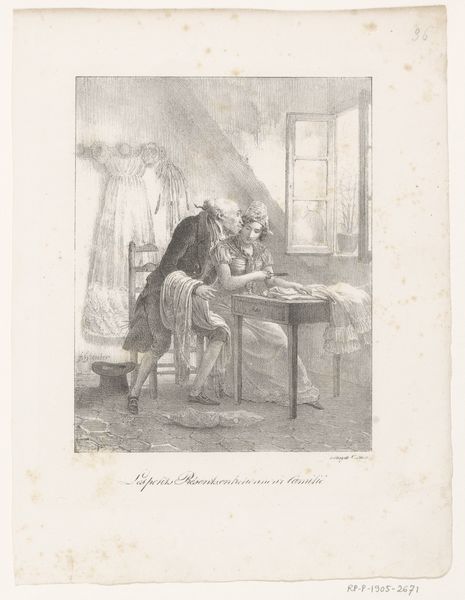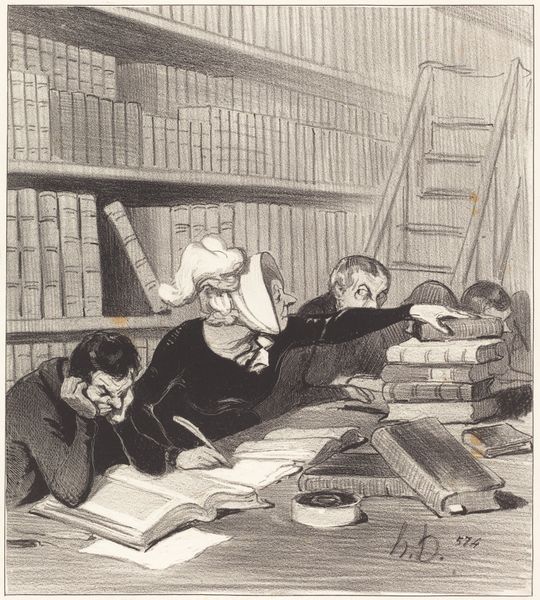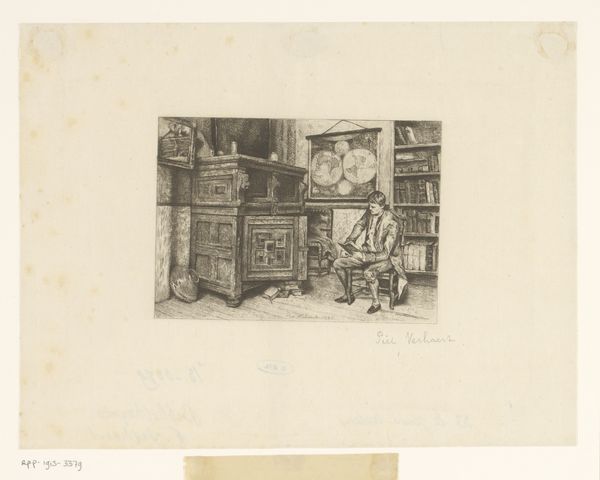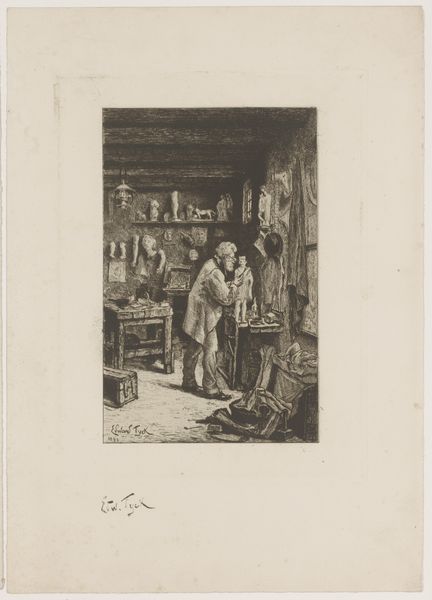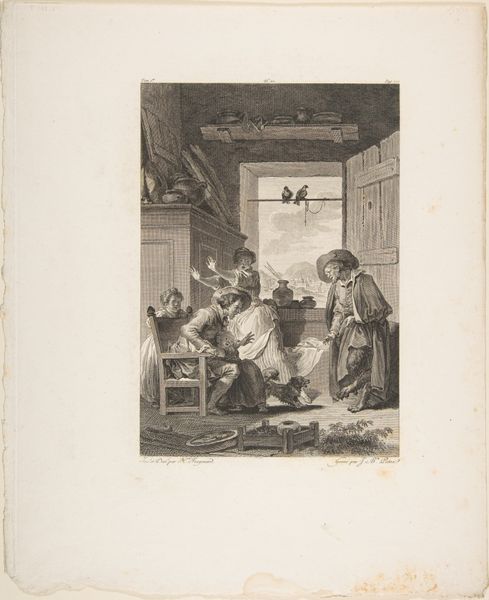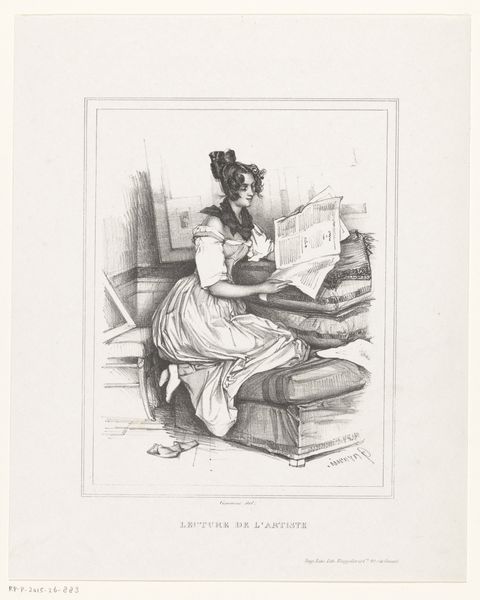
drawing, ink, pen
#
drawing
#
pencil sketch
#
ink
#
pen-ink sketch
#
pen
#
genre-painting
#
academic-art
#
realism
Dimensions: height 332 mm, width 237 mm
Copyright: Rijks Museum: Open Domain
Curator: Looking at "Bibliotheek in de Abdij van Subiaco" by Léon Gaucherel, executed around 1880 using pen and ink, I’m struck by the intricate detailing of the scene. Editor: It has an immediate impact. There's a deep sense of studiousness—almost solemnity. All those books are looming. What significance might that imply? Curator: The shelves themselves, rendered in such detail, emphasize not just the intellectual environment, but also the physical labor involved in producing and maintaining these libraries. Someone built those shelves, collected these books. Each book signifies labor, knowledge production, and intellectual pursuits combined. The sheer materiality speaks to a societal value system centered around information. Editor: Absolutely. Consider how the Benedictine order embraced and preserved classical texts; this depiction acts as a visual mnemonic of a historical commitment to scholarship. Also the lighting, strategically used with shadows cast down the hallway really draws my attention towards the books they are examining. Curator: I think the artistic choices made in presenting the librarians' working conditions offers crucial insight here. It reveals to what extent the construction of places of scholarship influenced both the knowledge produced, as well as its cultural reception. Editor: I agree, we cannot avoid interpreting all of the components in view when forming meaning in such an enclosed image. By the way the monks have focused intensely to the works in front of them suggest that wisdom or understanding cannot be grasped unless complete reverence to the reading material is enacted. It is the light reflecting onto them that illustrates how such action provides wisdom to their very existences. Curator: Exactly. Beyond just a drawing of a library, it gives a sense of not only physical space, but cultural values which went into organizing monastic intellectual production in France at the time, even during periods after the revolution where monastic activities were still taking place albeit at lower intensity. Editor: So we are confronted not only with the literal space but also the metaphysical—the knowledge, preservation, transmission all rendered visibly potent by light, space and focused minds. Curator: It becomes about how society, or monastic communities, viewed intellectual production as work as well. Editor: It seems Gaucherel, perhaps unintentionally, composed an intricate map into not just physical place, but also what shapes knowledge, its legacy and meaning to its very vessels of transmission.
Comments
No comments
Be the first to comment and join the conversation on the ultimate creative platform.
